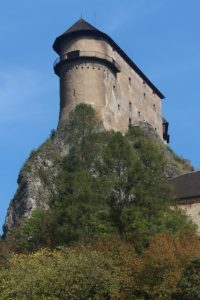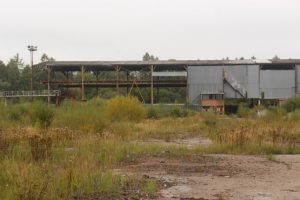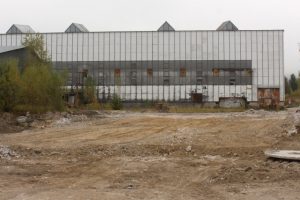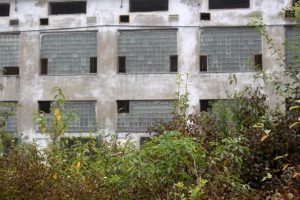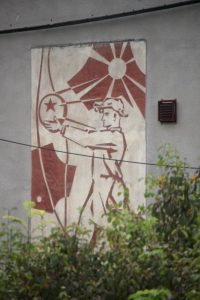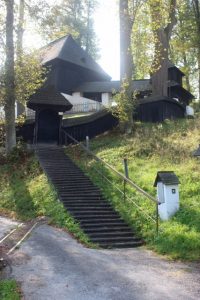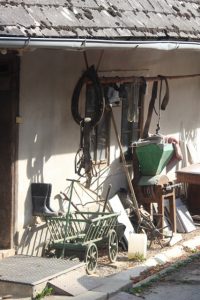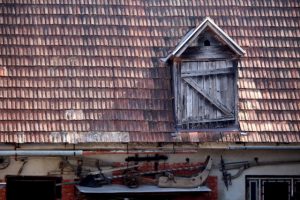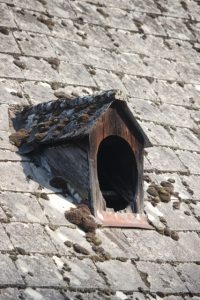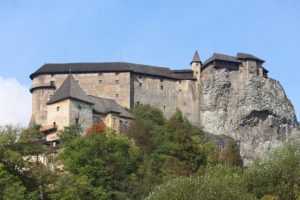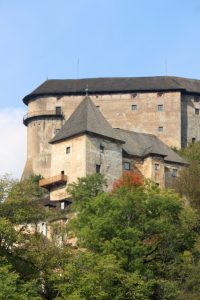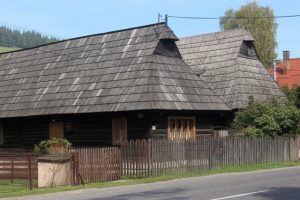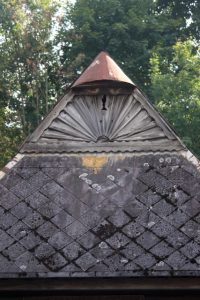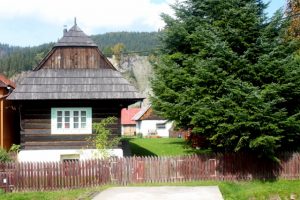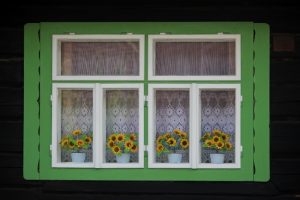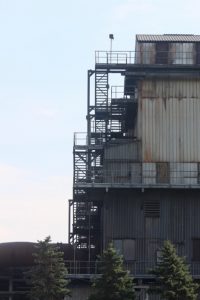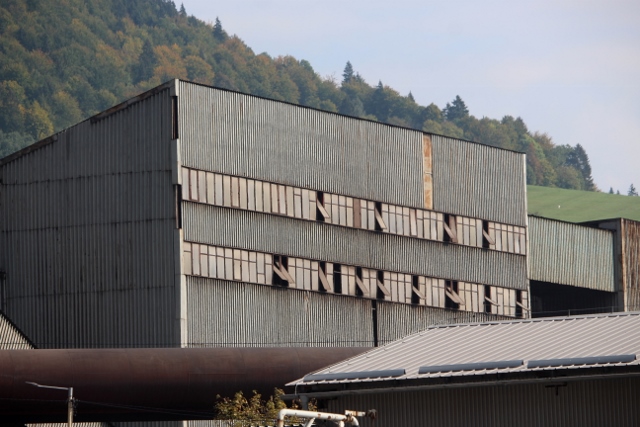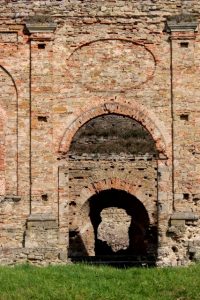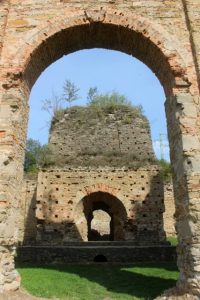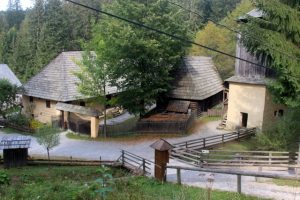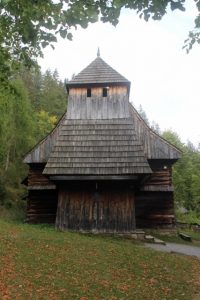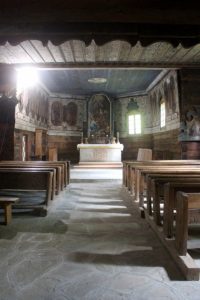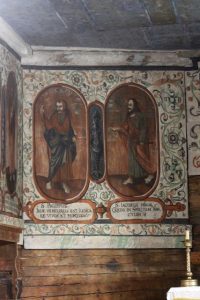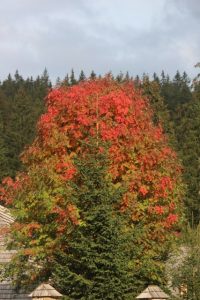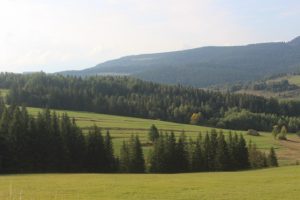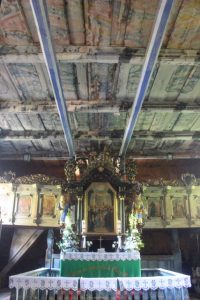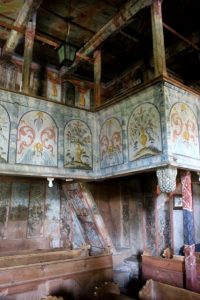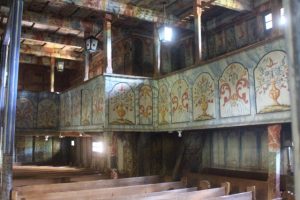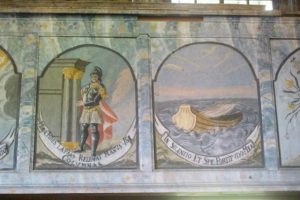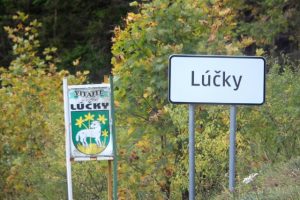Although our base is not the most attractive of towns, the Orava region offers a range of heritage architecture, from castles and wooden churches and houses to the industrial complexes; you either hate them, or you love them, but photogenic they are.
This is not the smoothest of our trips, I have said that before. Our strategically located base, Dolny Kubic, has exactly nothing to recommend it for – with the exception, perhaps, of the comfortable ‘penzion’ we are staying. The town square, deserted, has several older buildings and houses, not very attractive, whilst the rest of town has not changed much from its communistic past. It just feels as like 50 years back, in the look of the people, the atmosphere – I don’t know what it is, but this must have been how Eastern Europe looked and felt under its Soviet dominance.
Now do I have to admit that I have a certain fascination with Eastern Europe under Soviet dominance, especially if it comes to architecture and to factories. Outside Dolny Kubic is quite a bit of the latter, and the funny thing is, you can just drive onto one of those industrial complexes, nobody will stop you – at least, nobody stopped me. This particular one, a metallurgical plant at some stage in the past, was still being used, but on a much smaller scale. Lots of factory halls are standing empty, obsolete, capital expenditure slowly being destroyed in the process.
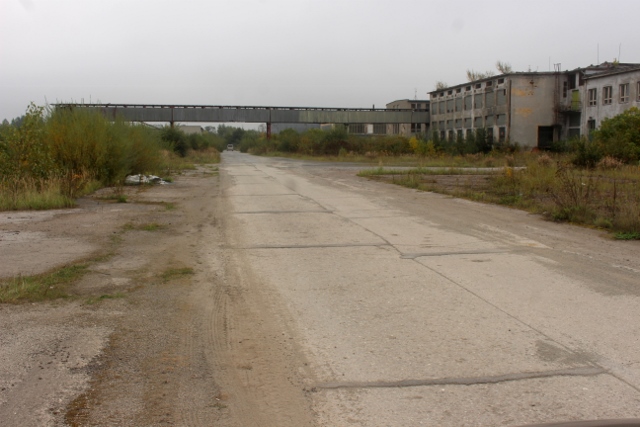
it is a huge complex, with only some little parts still being used for some kind of small scale business
But we were not here for Dolny Kubic or industrial complexes, we were going to explore the villages of the Orava region, with their wooden houses and their specific wooden churches, called articled churches. These were Protestant churches which were allowed in Slovakia – strictly Roman Catholic under the Habsburgs – from 1661 onwards, but with severe restrictions: they had to be outside the village limits, constructed from wood without use of nails, and without bell tower. They could not be looking like real, that is to say, Catholic churches, couldn’t they?
The first target was the church in Istebne, built in 1686. Apparently, the inside is richly decorated with frescos in a naïve-like style. I say ‘apparently’, because the church was closed. An office at the back, church related, was also abandoned, and at the house behind there, part of the same compound, there was nobody, either. No phone number, no nothing. No explanation at the entrance. But we don’t have to see them all, and there are more churches in the area, so off to Lestiny, another village nearby, with another articled church. Equally closed, but with phone number, this time. To no avail, the caretaker with the key was visiting her mother, and not coming back. Hmm. There is a third one, in Tvrdosin, quite a bit further away, but that one, according to the internet, is closed on Mondays. At least they communicate that. Thus Monday, not a good day (did I say the same about Sunday, yesterday?).
We drive north, anyhow, further into the Orava region. To see the Oravsky Hrad – Orava Castle -, perhaps the most impressive castle I have ever seen, from a distance. Spectacularly perched on a cliff top, this is how castles should be. The place can only be visited with a tour, which invariably will be in Slovak only, and which will focus on the interior, the rooms, the furniture – we have been there before, didn’t find it that interesting. But the outside view of the castle remains an image I will not quickly forget.
Podbiel is a village known for its wooden houses. And there is indeed an impressive collection of them, a short walk passes several well-maintained villas, a bit like Cicmany, but then without the painting. I especially like the gables, and the fact that these are houses just like the other houses in the village, used by people living in them, putting flowers in the window – and fences around their gardens, to make sure tourists don’t just walk in.
I have posted a few more photos of Podbiel’s houses here.
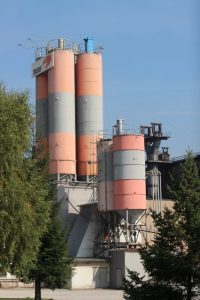
can’t let this one pass: another industrial complex, near Podbiel, this is a still working cement plant
Zuberec, a little further east is different. Here we encounter a skansen – an open-air museum –, and open, for a change, where the wooden houses from the surroundings have been collected for display. And for preservation, I suppose. Nice, of course, much more variety that what we saw in Podbiel, but in a more artificial atmosphere; I prefer the real thing. Oh, and they also had a little wooden church in the skansen, a 15th Century one, but this time a Catholic church. Which was kind of open: you could look inside from the door, but not walk inside. Not the same.
There are a few more pictures of the skansen here.
Had I told you already that the whole day the weather was grim, overcast? No, but you noticed it from the photos, so far. Yet, our fortunes were to change. The next day we went back to Lestiny, where we met the woman with the key. Who let us into the wooden church so hermetically closed the day before. She told us straight away that photography was not allowed. Yet, with the combined charm of my travel companion and me, she relented, and did allow me to take some pictures. Of this truly spectacular interior, walls and ceilings painted all over with 18th Century folk-painting of religious scenes as well as general decoration. Of a remarkable artistic quality, too. See more of the church here.
Back in business! This was a real nice experience again. It cannot have been coincidence that, a little further, we passed the town of Lucky.
Next: another village again, Vlkolinec
